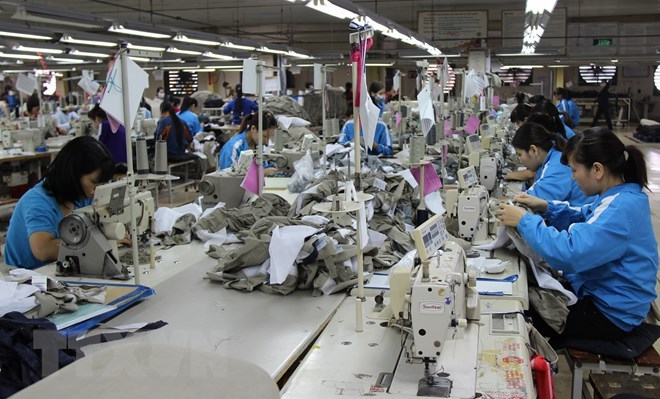ID :
497815
Wed, 07/11/2018 - 05:28
Auther :
Shortlink :
https://oananews.org//node/497815
The shortlink copeid
Vietnam, RoK see bright prospects in textiles partnership

HCM City, July 11 (VNA) – Vietnam and the Republic of Korea (RoK) have secured successful outcomes in the textiles sector based on their establishment of a cooperative system that supplements one another with technology and human resources.
According to Ahn Seong Ho, Trade Counsellor at the RoK’s Consulate General in Ho Chi Minh City, the two countries have enjoyed fruitful economic cooperation over the years, with two-way trade growing by more than 20 percent annually to reach 64 billion USD in 2017. The Vietnam-Korea Free Trade Agreement (VKFTA) will be soon coming into effect, opening up more opportunities for bilateral trade.
The RoK holds strengths in the field of technology, while Vietnam has an abundant supply of labourers – a supplementary factor in the bilateral partnership, he said.
In 2017, RoK firms invested in 44 textile projects in Vietnam, with a combined registered capital of 178.16 million USD. These projects use modern technologies and have a particular design focus.
Statistics from the Korea International Trade Association showed that in the first three months of 2018, Vietnamese textile products made up 34.05 percent of the Korean market in terms of value, an annual increase of 2.33 percent. These figures helped Vietnam rise to the top in terms of textile imports, surpassing China.
Vu Duc Giang, President of the Vietnam Textiles and Apparel Association (VITAS), said the RoK is among several countries with the most foreign direct investment in Vietnam, particularly in the textile sector.
According to him, in a bid to enhance the Vietnam-RoK collaboration in the textile industry, VITAS and the Korea Institute of Industrial Technology (KITECH) have jointly organised a host of activities on trade promotion, technological transfer, and personnel training over the past three years.
Giang said VITAS and KITECH have planned to step up their collaboration in the future.
Nam Seung Il, Director of Fashion Sales Research at the Korean-based E-Land Group, advised Vietnamese firms who wish to acquire more share in the RoK market to pay special attention to apparel materials and functions.
He suggested that garments should be made wrinkle-resistant, dry fast, and comfortable, adding that Korean consumers prefer items with feathers to boost warmth.
Experts have explained how fashion is shifting from seasonal trends to periodical trends, with trend lifecycles spanning from four to five weeks. As a result, automatic technologies in textile production are needed to to cut manufacturing times so items can be shelf-ready quickly./.





